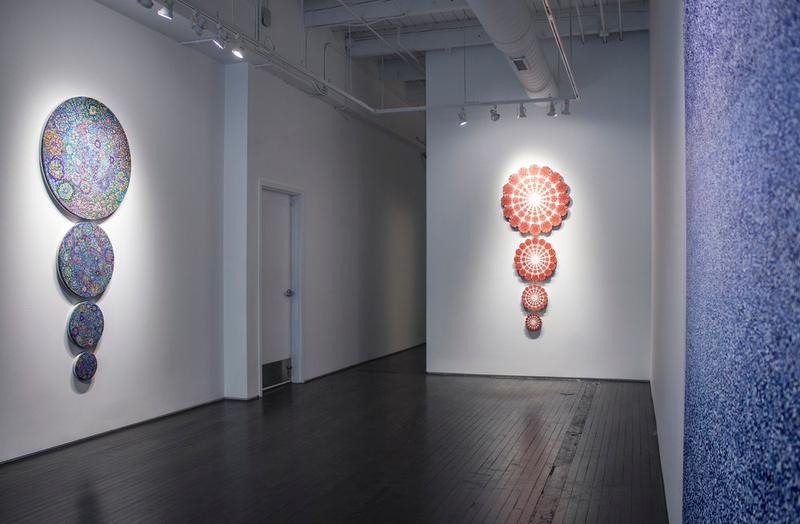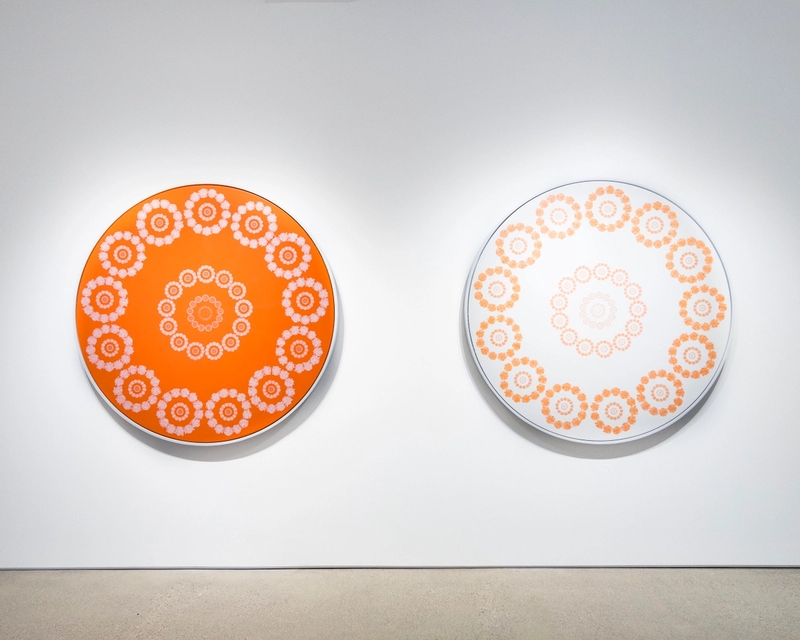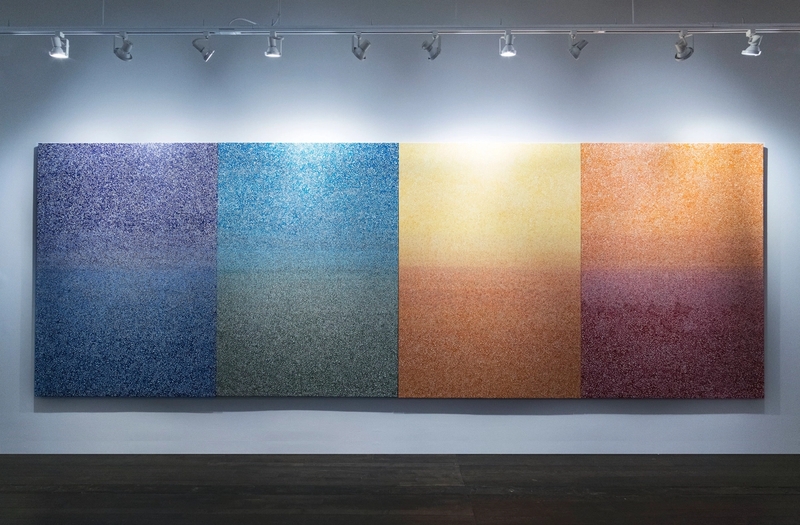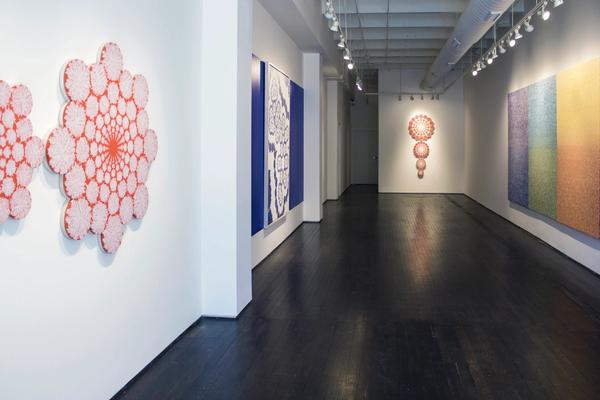
Press Release
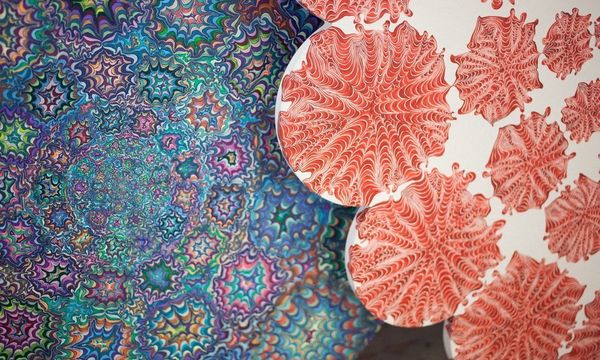
Library Street Collective is pleased to present Position, the gallery’s second solo exhibition with San Diego artist Kelsey Brookes. Heavily influenced by a background in biochemistry, Brookes’ work is a meditative exploration of molecular mapping, filled with color and intricate line work. Position further narrows the artist’s study with a focus on neurotoxins and the grand design inherent in nature’s expression of the Fibonacci sequence.
Brookes studied microbiology at Colorado State University and spent his first years in the field working in a research lab at the Center for Disease Control. With a promising career ahead of him, he took off for Australia while contemplating applications to grad school, and instead found his purpose in practicing painting and reading classic literature. However unlikely scientist-turned-artist might sound, Brookes’ tendency towards experimentation was the catalyst in discovering his voice and becoming a full-time painter. Like many artists, he began with figurative work, but moved towards abstraction after playing with stream-of-consciousness processes that meld molecular diagrams with meditative optics. “The artistic and aesthetic values I’d been practicing as an artist had always seemed in opposition to my scientific way of understanding, until this body of work”, says Brookes. The result is the perfect marriage of the artistic and empirical sides of the creative mind, conceiving truly unique works that find a rare place in the art world.
Art and science are often—and Brookes feels incorrectly—viewed as opposing poles of a creative continuum. When one looks at the factual evidence that grounds science, it is difficult to imagine any room for poetry and imagination, and yet scientific work is based in mystery. After all the evidence is compiled, statistics collected and hypotheses proven, the question always remains of how anything and everything in our realm of knowledge has come to be. It is this place that Brookes considers, extending artistic license and imagination to the wonder he feels when faced with such big questions. Many of his past works have referenced psychoactive chemicals such as psilobicin, mescaline, MDMA and LSD, where the viewer is presented with both the genetic map of each molecule as well as a simulation of their effects. In Brookes’ 2015 publication, Psychedelic Space, an essay by Hamilton Morris further explains the significance of his reverberating visuals: “If chemistry has been neglected by visual artists, it might be explained by the simple fact that molecules are invisible… even one of the octillions of molecules in the human body contains a scintillating world of resonance, vibration, interconversion, rotation, and electron flow”. Brookes carefully plots out the structure of his subject molecules onto canvas, where each atom and point of convergence between the chemical bonds will serve as a focal point from which the painted image radiates.
Position investigates both neurotoxins and the Fibonacci sequence, which are varied scientific topics that could be examined as opposites - one degenerative and harmful and the other exponential and prolific. Neurotoxins cause damage to cellular makeup and regeneration, while countless entities in nature strive towards the perfect patterning of the Fibonacci sequence. Examples of the sequence - the golden ratio - in nature include the way branches grow from a tree, dividing further and further into smaller twigs as they reach skyward; the flowering of an artichoke; and the fruit sprouts of a pineapple. Brookes overlays this patterning sequence onto his meditation paintings, creating a pattern of components that multiplies in size as it reaches the edges of the canvas. The end result is awe-inspiring from a distance and yet unending in its intricacy up close.
Install Images
